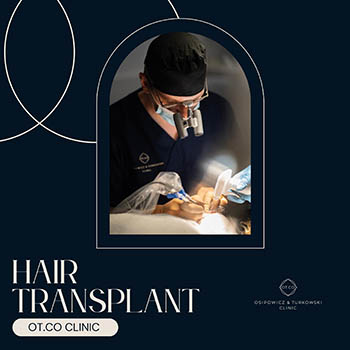Abdominoplasty – what is it?
Abdominoplasty is a plastic surgery that is becoming more and more popular every year. All because it is effective and brings visible results. Its main task is to reduce excess skin, i.e. skin folds and fat. Typically, this procedure is recommended for people who lost significant body weight quickly or for women who have had children. During the operation, it is possible to plasticize the rectus abdominals in order to make them tense and strengthened.
Abdominoplasty can be performed in different parts of the abdomen and therefore, there are several types of abdominoplasties. They differ in the scope of invasiveness, the size of the incision, and the time of surgery and convalescence. It is worth bearing in mind that plastic surgery of the abdomen is a serious procedure and should be performed on people who have not been successful in other methods of getting rid of excess skin and fat.
What does the procedure look like?
The abdominoplasty procedure is invasive and therefore requires anaesthesia. This is the first stage of the surgery. General or epidural anaesthesia is used, which is decided by the anaesthesiologist. Then an incision is made from hip to hip. The cut is located under the linen line. The next step is to cut the navel area. The skin from the abdomen with adipose tissue becomes delaminated and becomes tense. The next step is cutting out the adipose tissue and creating a new place for the navel.
Tummy tuck is also emphasizing the waist, which is achieved by modelling the straight muscles of the abdomen. The scope of the cut and the amount of cut skin and adipose tissue, depending on the type of abdominoplasty performed. The surgery may take anywhere from an hour for mini abdominoplasty, to 3-4 hours for total abdominoplasty.
Mini abdominoplasty
One type of abdominoplasty is mini abdominoplasty, which involves making a minimal ellipse-shaped incision. Typically, the size of this cut is from 5 to 10 centimetres. It can also be performed with an endoscope. In this case, the patient’s skin is incised in three places through which the excess fat is removed with the help of special devices and the loosened muscles are ligated. It is a treatment intended for patients with a small excess of fat and skin.
Partial abdominoplasty
Abdominoplasty can be performed only in the lower parts of the abdomen or only in the upper parts – reverse abdominoplasty. The second type of surgery is usually performed on women who are pregnant or have a convex navel, where excess skin and fat are located in the upper abdomen. In this case, cuts are made on the line of the costal arches. The procedure can also be performed under local anaesthesia.
Total abdominoplasty
It is the most complex and demanding abdominal plastic surgery. Therefore, it requires complete anaesthesia. It consists in cutting out excess skin and fatty tissue from the abdominal and lower abdomen area. Additionally, modelling of the rectus abdominis muscles is performed. Abdominoplasty and its price, depends on the type of surgery, start from PLN 7,000 and reach up to PLN 24,000 (if there is a white line hernia surgery and suction of the sides for additional body contouring).
Convalescence
The patient after surgery, especially total abdominoplasty, stays in the clinic for up to 2 days to be observed and to avoid complications. About 14 days after the surgery, the stitches are removed. For 30 days, the patient should wear special compression underwear that promotes healing. After abdominal plastic surgery, it is recommended to rest for at least 2 weeks.
Therefore, a return to normal duties is not recommended. It is very important that the wound heals properly and that it does not break due to physical activity or heavy lifting. It is worth following the doctor’s instructions carefully to avoid excessive pain, hematoma or bleeding. The wound after surgery must be carefully monitored and in the event of any disturbing symptoms, contact a doctor.
Contraindications
Abdominoplasty must be preceded by an extensive interview with the patient and tests such as morphology, ultrasound of the abdomen, blood and coagulation tests, or ECG. This is a very important part of the preparation for surgery, that allows to exclude contraindications for surgery. The main ones are primarily diseases related to the circulatory and respiratory systems. Moreover, if the patient has varicose veins or is too obese, surgery cannot be performed. It is also worth knowing that the procedure is not recommended for women who plan to become pregnant in the future.






